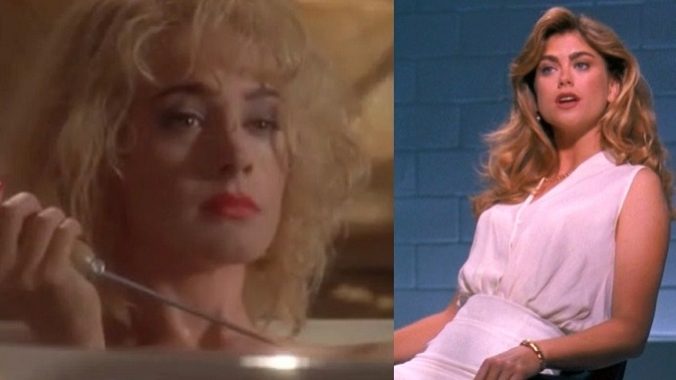The Spoof Movie Boom of 1993, 30 Years Later

Poring through a list of 1993 box office hits, it’s easy enough to pick out the big-money trends: grown-up thrillers, like John Grisham adaptations (The Firm, The Pelican Brief) and old-man star vehicles (In the Line of Fire; Rising Sun); comedy sequels galore; and indirect echoes of recent-past hits ( The Three Musketeers, the poor man’s Robin Hood: Prince of Thieves). Further down the charts, however, are a gaggle of movies uniting all of those elements into a single unlikely trend: In 1993, the spoof movie was booming. Thanks to the twin spoof successes of The Naked Gun 2 ½ and Hot Shots! back in 1991, ’93 saw a full crop of comedies imitating the gag-a-minute stylings of Zucker/Abrahams/Zucker, the team behind Airplane! and the Naked Gun series. Starting with February’s National Lampoon’s Loaded Weapon 1, continuing with summer titles Hot Shots! Part Deux and Robin Hood: Men in Tights, and wrapping up in the fall with Fatal Instinct, 1993 was both the spoofiest year in modern film history, and a sign of how unsustainable the form would become.
If there’s any measure of just how big the spoof biz was at the time, it’s Loaded Weapon 1. Arguably the shakiest concept of the year’s quartet — an action comedy parodying another series of action comedies not exactly known for its self-seriousness — somehow attracted both the National Lampoon brand name (not exactly a feather in anyone’s cap, but also not far removed from the days of Christmas Vacation) and a litany of stars: Emilio Estevez and a pre-Tarantino Samuel L. Jackson star as the Mel Gibson/Danny Glover equivalents, and the movie’s supporting cast (Jon Lovitz, Phil Hartman, Tim Curry, Denis Leary, William Shatner, Kathy Ireland) and cameo roster (Bruce Willis, Whoopi Goldberg, F. Murray Abraham, Charlie Sheen) are both fairly packed with major names, especially for the time. All of these people, many at or around peaks of their careers, agreed to do a movie directed by a guy who wrote a bunch of Police Academy sequels, as if mistakenly boarding a Naked Gun sequel train in a rush.
Though the movie occasionally takes a well-earned potshot at Mad Mel (“I’m just taking one of those unmotivated butt-in-the-moonbeam walks,” Estevez says during his oiled-up nude scene), most of its attempts to directly spoof Lethal Weapon fall predictably flat in ways that anticipate later, worse spoofs that followed in the wake of Scary Movie. The scar-comparison foreplay from Lethal Weapon 3 gets a scene that does the same thing, but crazier; the whole movie finishes off with a lazy Wayne’s World homage. At least when Hot Shots! Part Deux goes after a specific scene, it’s an inspired goof: a flashback shows Topper Harley (Charlie Sheen), the initially Cruise-ish and now Stallone-like hero of the series, and Ramada (Valeria Golino) nuzzling over spaghetti, meticulously imitating the most famous scene from Lady and the Tramp.
Part Deux and Men in Tights were the spoof veterans of the year, boasting ZAZ co-mastermind Jim Abrahams and old master Mel Brooks, respectively, awarded plum summer-season slots from 20th Century Fox and grossing a similar amount. They’re both also oddly specific, with the Hot Shots! sequel heavily imitating the plot of box office disappointment Rambo III and Robin Hood goofing on the Kevin Costner movie from two summers earlier (by contrast, Brooks was previously moved to do a feature-length parody of Star Wars). Both have occasional moments of grinning laceration, like Cary Elwes dunking on Costner’s lack of an English accent, or Part Deux underlining a scene where Topper goads a battle-scarred soldier into killing again (“War!” the man enthuses after getting back in the game. “It’s fantastic!”), interrupting an overall softness that aims for tweenage snickers rather than truly inspired silliness. Part Deux engages in a kind of “ironic” American jingoism; Brooks, by the time of Men in Tights, was heavily recycling from his old material.
-

-

-

-

-

-

-

-

-

-

-

-

-

-

-

-

-

-

-

-

-

-

-

-

-

-

-

-

-

-

-

-

-

-

-

-

-

-

-

-








































